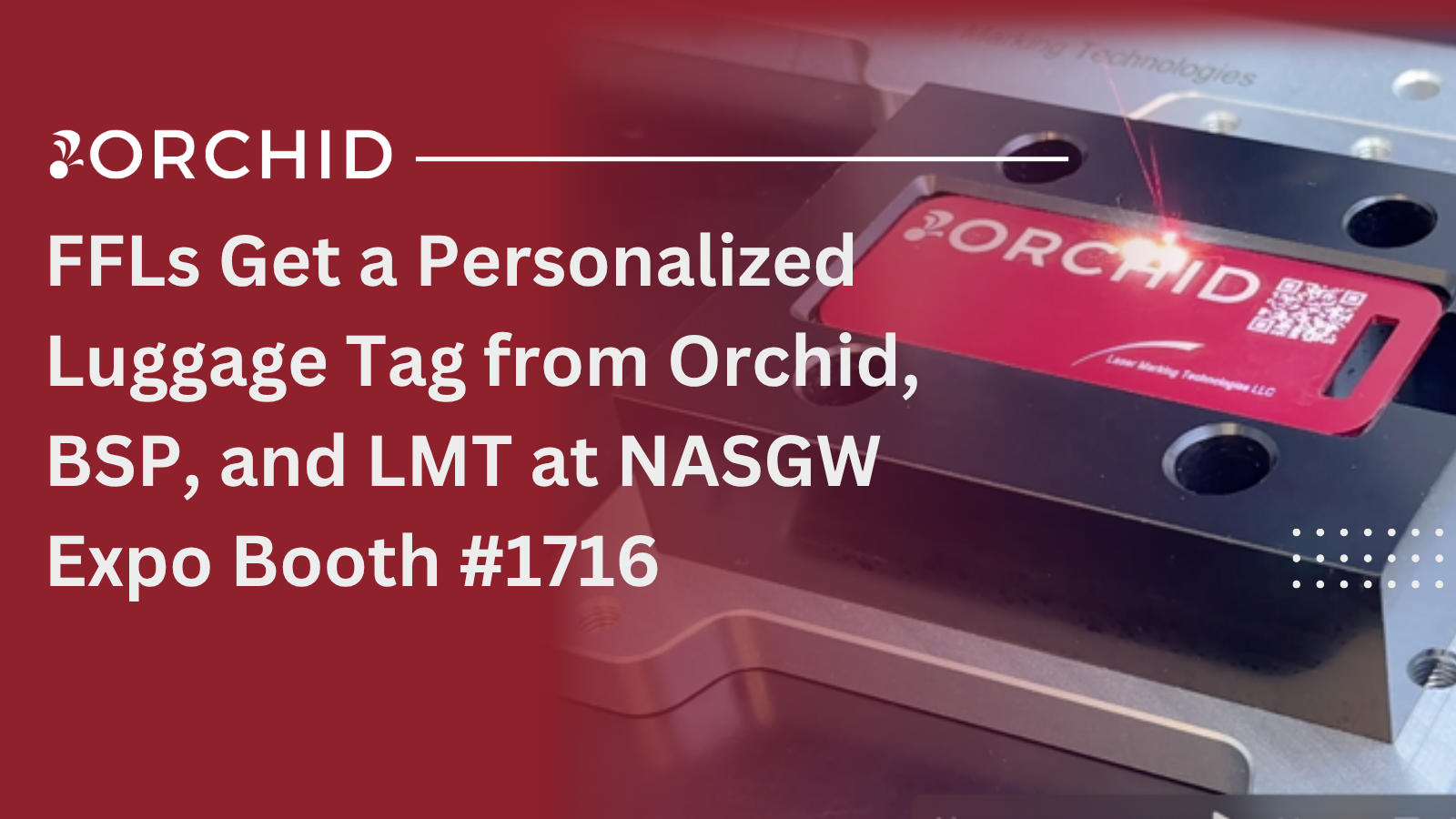Firearm Serial Number management is a necessary component of the industry’s asset identification, tracking and tracing process. In this post, we will cover Firearm Serial Number Application, the second of the four main sub-processes involved in Serial Number Management (Reservation, Application, Recording and Tracking). You can find the post about Reservation here.
Overview of Firearm Serial Number Application
Depending on the structure of your supply chain, serial numbers are either applied to the frame or receiver: (a) internally, within your own manufacturing facility; or (b) externally, by a third party. For both regulatory and operational reasons an FFL should seek to implement controls over serial numbers applied in either scenario.
Internal Firearm Serial Number Application
1. Apply With Different Methods
Serial numbers must be applied in a human readable format and in accordance with the Marking Requirements of 478.92, amongst other Rulings, Letters and government issued rules. The tools used to apply a serial number are not necessarily regulated and include Rollmark machines, Dot Peen machines, Laser machines and various other forms of engraving tools.
For decades industry’s have relied on Rollmark machines (or “rollmark”) as the primary method of application. A rollmark is achieved by forcing a “die” of moveable number sequences into the metal surface of the firearm frame or receiver. Manufacturers sometimes prefer rollmark machines because of the speed of application and the reduced cost to implement. Additionally, rollmarking leaves the greatest metallurgical imprint in the underlying metal, increasing the likelihood that an altered serial number could be discovered with scientific processes. However, rollmarks are generally being phased out due to the limitations which prevent integration between the machine and a serial number reservation table. Rollmarks depend on a human action to increment the number in the die press, which could otherwise create duplicates.
A more modern approach that enables strong integration between serial number reservation systems and the application process include Dot Peens, Lasers and any other apparatus whose serial number sequencing can be systematically controlled. Lasers tend to give a clean, crisp mark and offer a range of controls but can be expensive if a manufacturer seeks a high-powered device whose cycle time does not limit production efficiencies. Dot Peen marking tends to fall in-between that of a rollmark and laser but does not offer the cleanest mark and can require replacement of broken tools.
2. Correct Application
The application process begins by ensuring that the correct serial number is applied to the appropriate firearm. Although the regulations do not dictate the number itself there are many other reasons to ensure that this is done properly. Manufacturers relying on automated reservation and application process often rely upon a database-driven reservation system, as previously discussed, that allocates a string of available serial numbers to a given product configuration (i.e., via a “Part Number”). Ideally, your laser or dot peen serial number application tool will require the entry of a Part Number in order to feed one of many serial numbers available and reserved for that particular model. The need for strong controls in this area is further amplified when a manufacturer provides firearms to US or Foreign Governments, or even special VIP clients who may dictate the numbers to be used. In higher volume environments the controls to ensure the alignment of a particular firearm part number and a serial number sequence are controlled optically. Lower volume environments tend to rely upon fixtures and tooling that only permit firearms of the intended shape or size to be loaded during the application process.
3. Maintain Barcode Consistency
Many FFLs have started manufacturing products with a 1-dimensional or a 2-dimensional barcode engraved directly into the metal. Ultimately, the regulations still require the human readable number—but the addition of a barcode offers increased speed and accuracy throughout the supply chain as firearm transactions become driven by an RF scan gun (or OCR) rather than human “key” entry. But buyers beware: a barcode does not automatically help the situation. It is important for FFLs to have human or optical (OCR) validation mechanisms that ensure 1D and 2D barcodes match, exactly, to the regulated human readable number. Otherwise, accidental transacting of the wrong item can negatively impact both inventory and regulatory records.
4. Apply According to Regulations
As noted above, Section 478.92 of the regulations specifies the markings requirements for both serial numbers and other required information (i.e,. Model, Manufacturer, etc.).
According to this section, serial numbers:
- Must be conspicuously engraved, cast or stamped (impressed) on the firearm frame or receiver;
- The serial number cannot duplicate the serial number appearing on any other firearm the importer previously imported; and
- For firearms imported after January 30, 2002, the engraving, casting or stamping (impressing) of the serial number must be to a minimum depth of .003 inch and in a print size no smaller than 1/16 inch
(Note: We recommend that you consult the entire regulation).
It is important that FFLs implement a statistical validation process at the serial number application process to ensure these requirements have been met. In the event that firearms are subject to polish or coating, they should be re-measured for proper depth prior to distribution in commerce.
External Serial Number Application
5. Specify Inspection Criteria
If you hire a subcontractor to manufacture parts of your to-be-assembled firearm, you can still be held accountable for serialization issues. The best practice is to specify your desired regulatory requirements in your purchase order and supporting inspection plans. Your quality control and compliance teams should check all incoming product to ensure these criteria are met. This includes confirming that 1D and 2D barcodes match the human readable serial numbers present on the cores.
Risk Factors
If you’re using a dot peen or laser to apply serial numbers, manual overrides to the machine can introduce risk. The same applies to power outages. If a machine shuts off halfway through applying a serial number, it’s important to affirm which serial number is used and correct the assignment to future products accordingly. Test runs of the machine are another area of risk. If the first few runs of the laser in the morning are to get the machine warmed up, those activities should ideally be conducted on unregulated parts and using test serial numbers that do not come from your regulated pool.
Computer-controlled lasers and 1D / 2D barcode methodologies are revolutionizing firearm serial number management. However, using these technologies without the proper design and internal controls can create compliance challenges even faster than a human-based environment. Special consideration should be given to the internal controls, which govern both Serial Number Reservation and Application. Solutions to potential errors should be considered prior to implementation.
If you have a question regarding Serial Number Management, contact our team. We’ve implemented laser hardware and software, 1D/2D barcode applications, optical scanners and have much expertise to share.
More Articles Relating to Firearm Firearm Serialization or ERP
- Best practices in Firearm Destruction and Scrapping
- Five Best Practices in Firearm Serial Number Tracking
- Five Best Practices In Firearm Serial Number Reservation
- Firearm Serial Number Recording
By Jon Rydberg
CEO, Orchid Advisors
Orchid Advisors assists firearms manufacturers, distributors and retailers in achieving compliance and operational excellence through education, technology, software and consulting solutions that reduce risk, cut costs, and provide expert guidance to make our client’s business more successful and efficient.






0 Comments